David-Jeremiah: I Drive Thee
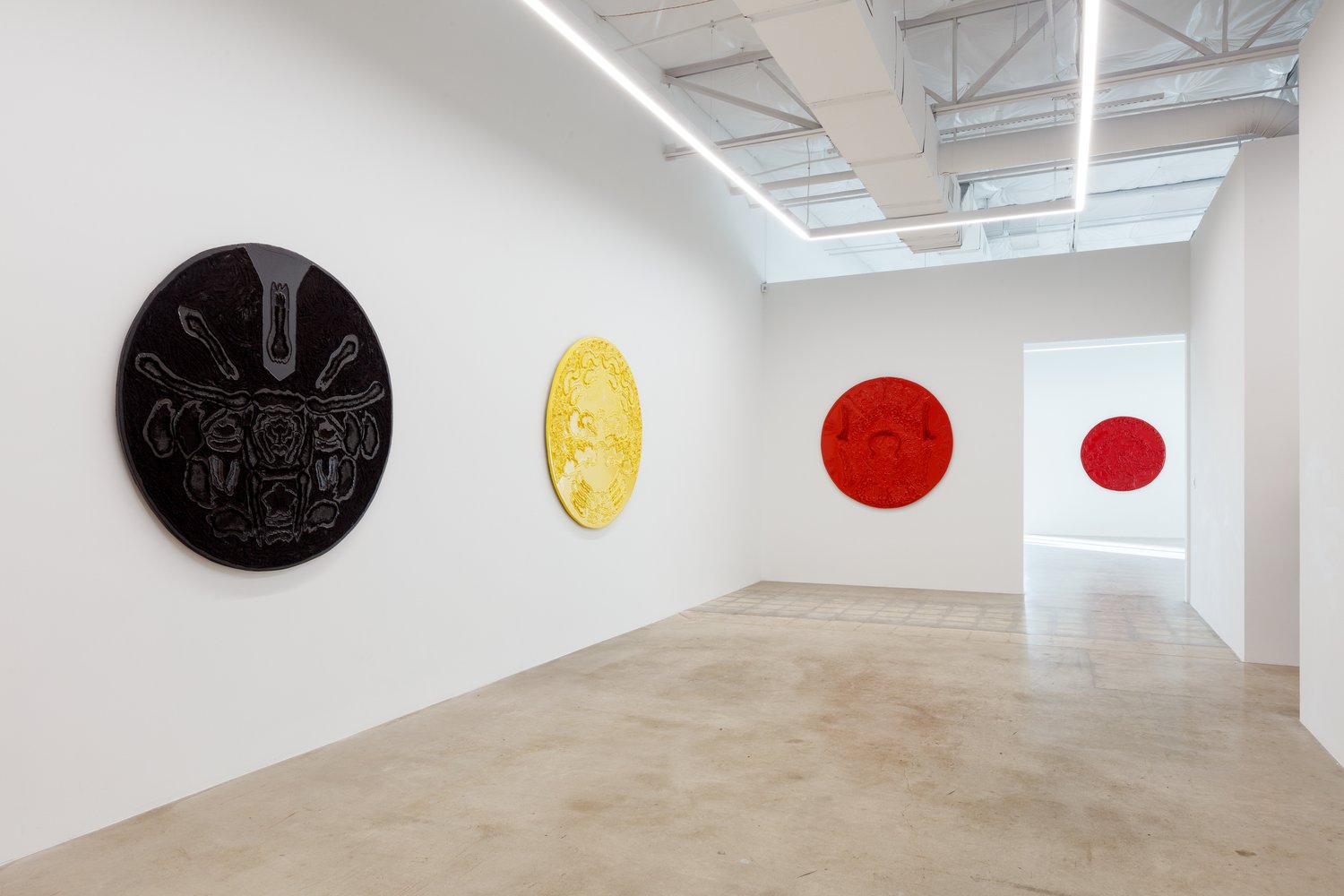
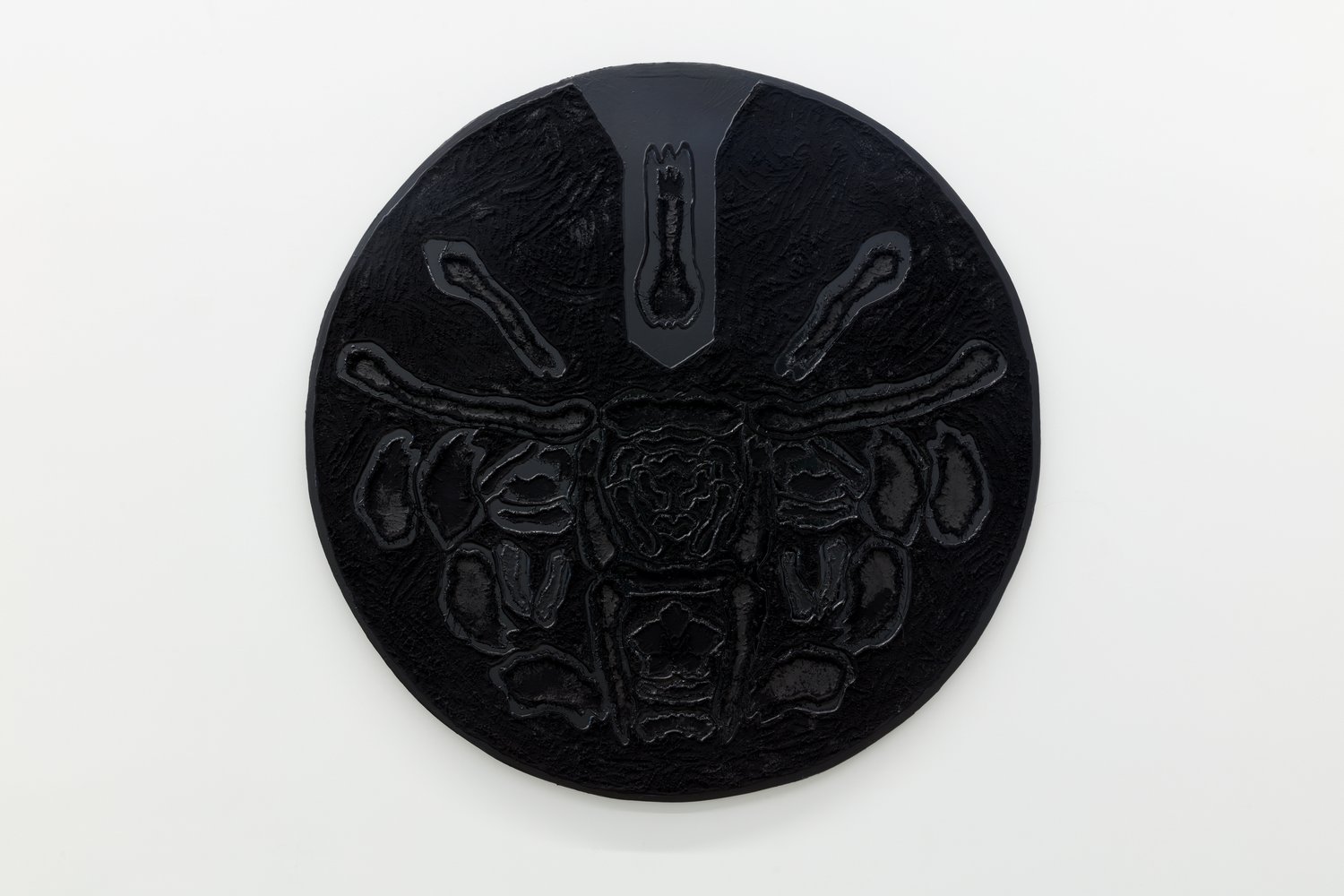
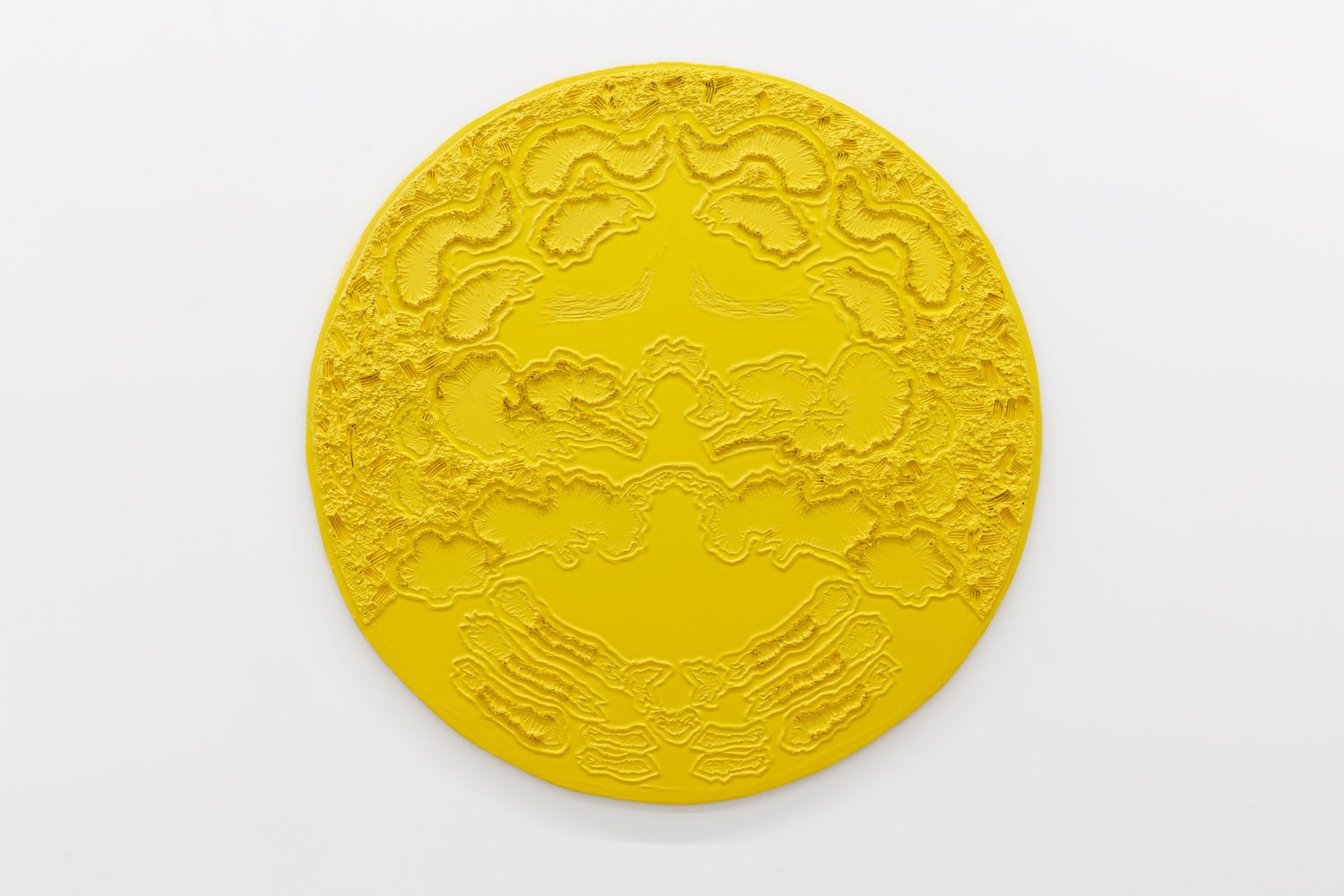
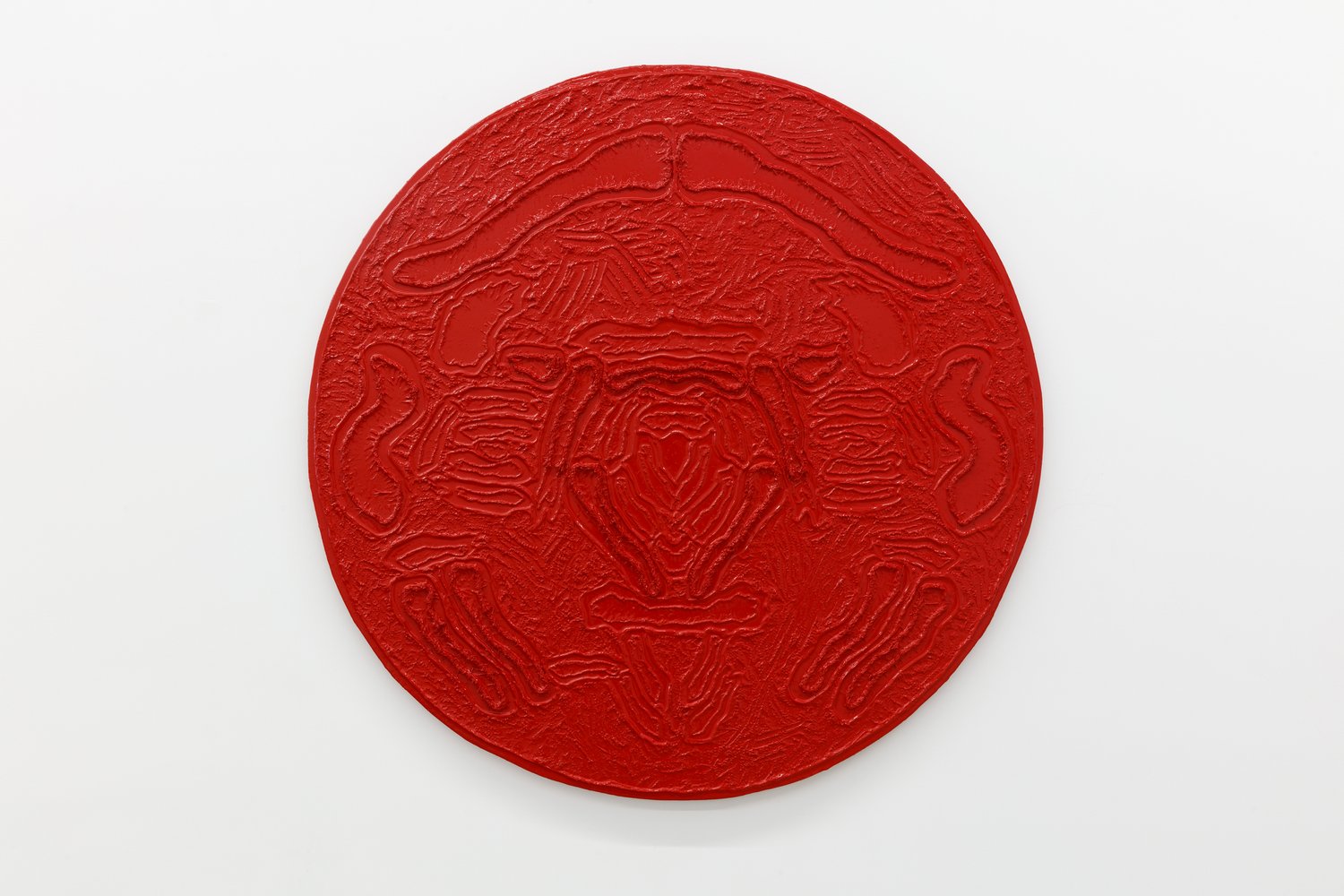
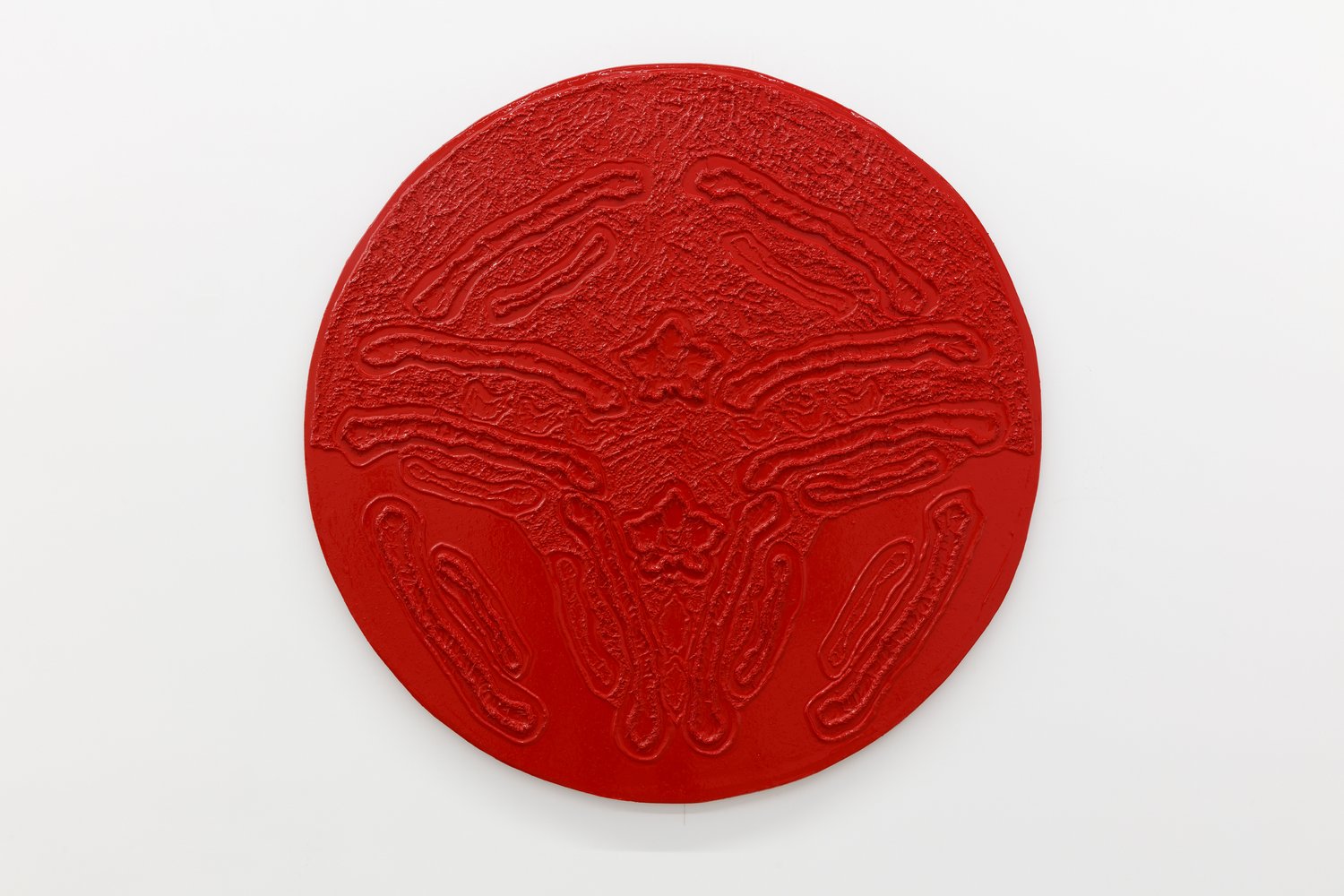
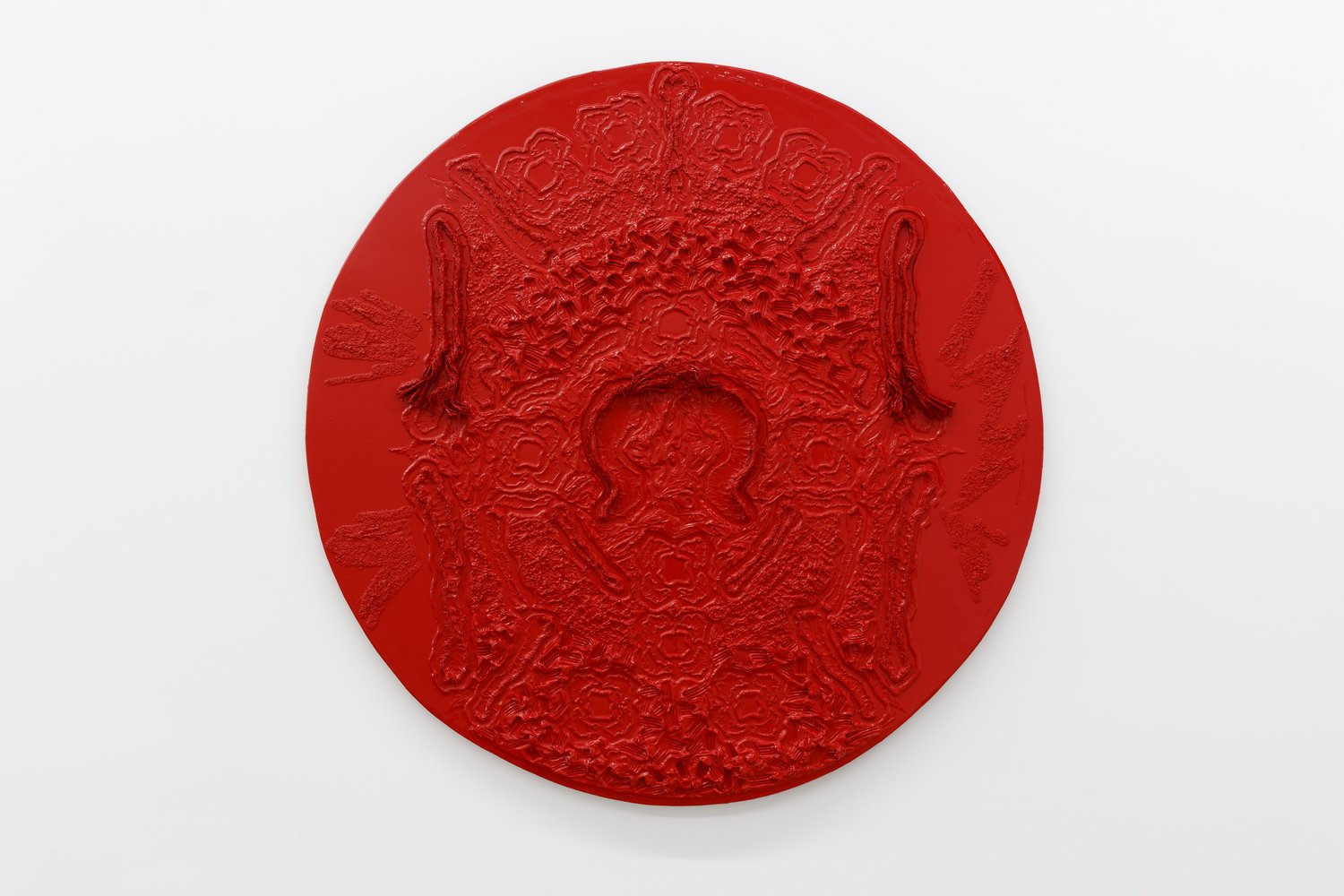
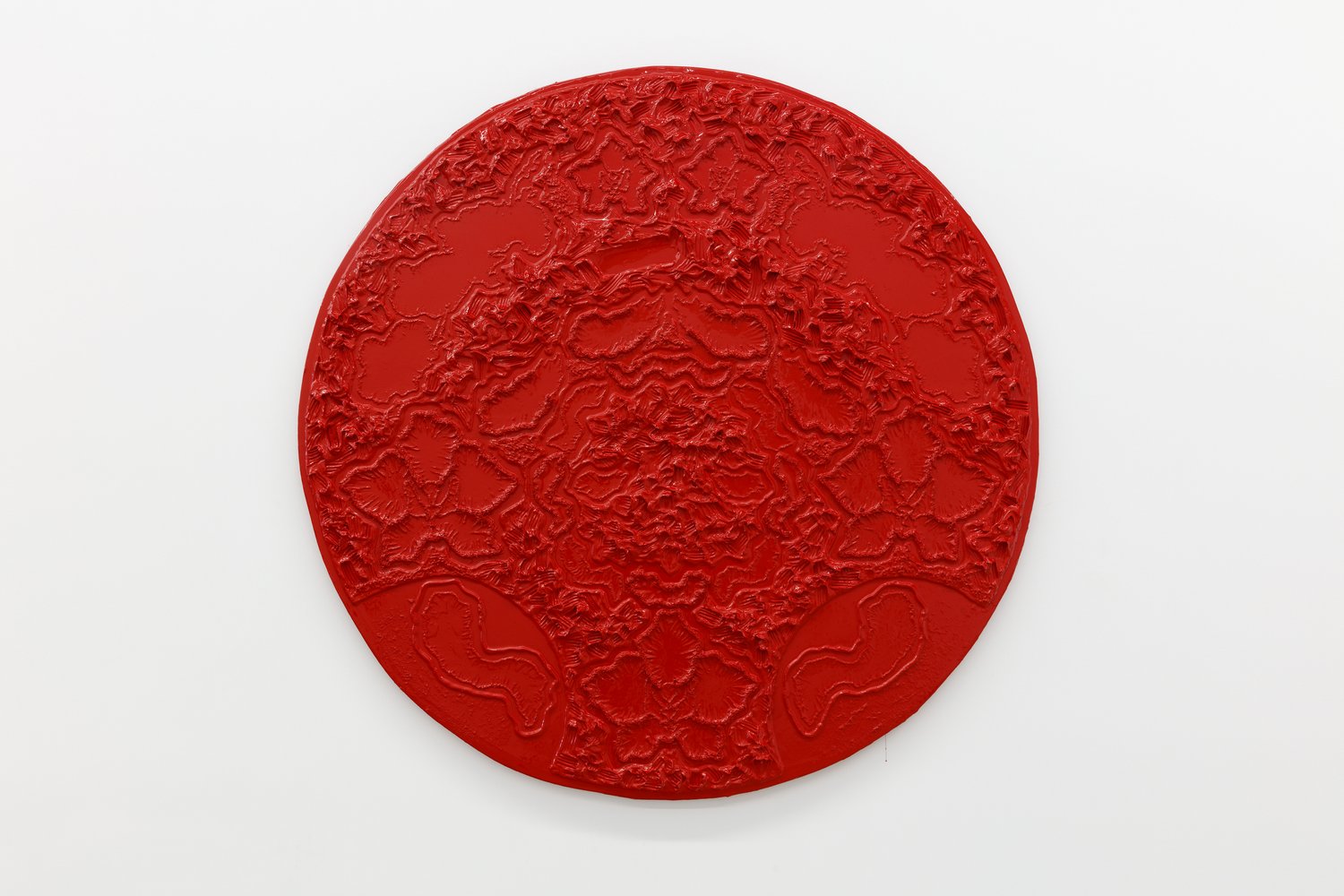

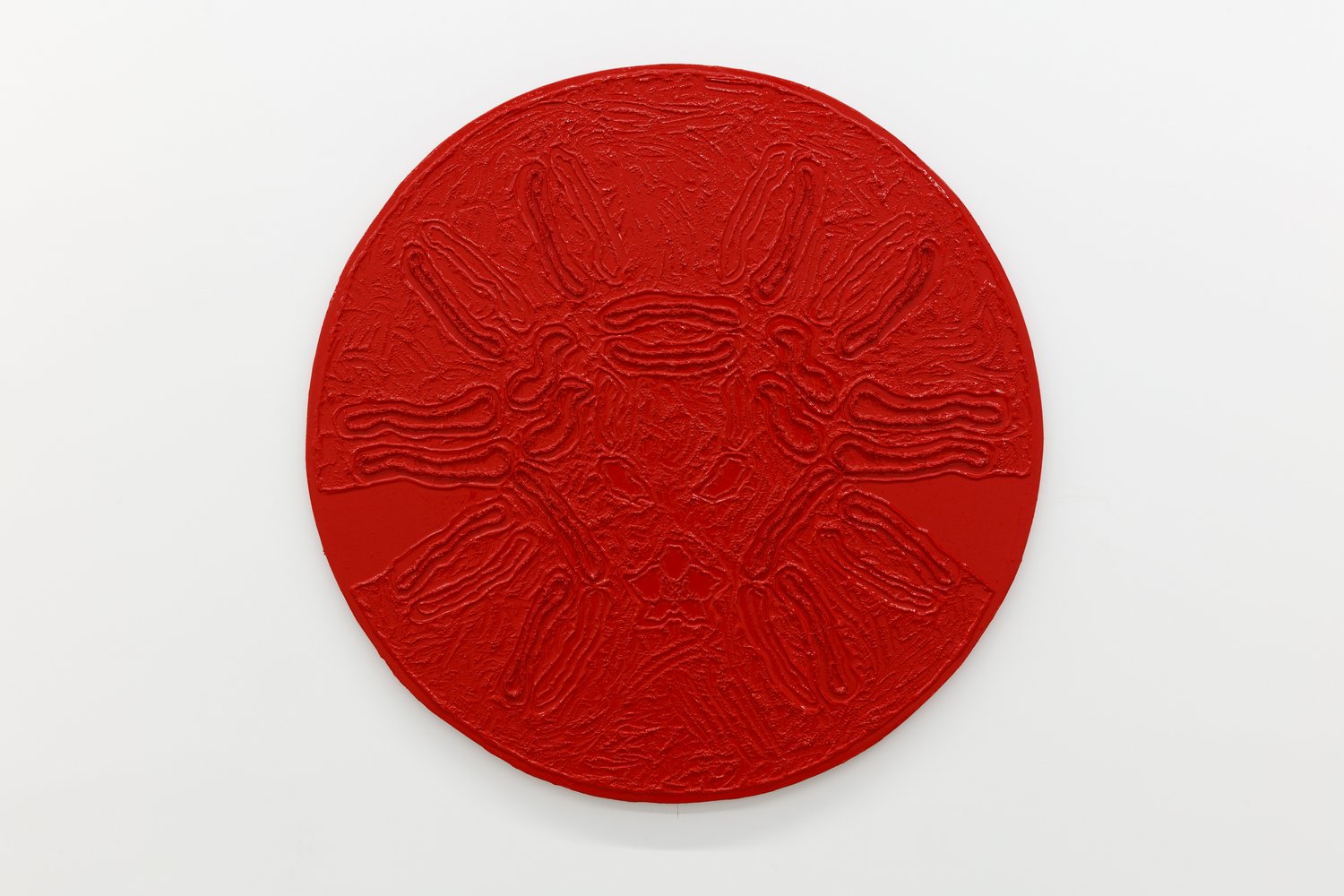
12.26 is pleased to present David-Jeremiah: I Drive Thee, a new series of works on wood panel that continues the artist's conceptual throughline of the Lamborghini automobile, likening this highly complex and grandiose piece of machinery to the male Black body as a symbolic site of masculinity, violence and potential. Through the meticulous arrangement of two motifs, the Human Collar Bone and the Orchid, David-Jeremiah has created eight uniformly sized tondo paintings that are each based on the design of a Lamborghini steering wheel. For this exhibition, David-Jeremiah draws upon the link between the luxury car brand and the history and brutality of Spanish bullfighting. Typically, each Lamborghini model is named after a bull breed or a fighting bull that has either defeated a matador in the ring or survived enough contests to retire.
At the core of I Drive Thee is the exploration of two significant characters in bullfighting: the Horse and the Bull. Historically, before the main act, there would be a clash between the two animals in which the Bull would inevitably kill the Horse, ultimately vilifying the Bull and preparing him for his final faceoff with the Matador. For the final engagement, the Matador would often execute the Bull, conclusively resulting in the death of two beasts. Within this narrative, The Horse represents one side of Black masculinity that is “user-friendly” and innately palatable. A Horse, though also considered a beast by definition, is widely regarded to be the tamer, more docile animal. Alternatively, the Bull represents the other side of Black masculinity that is notoriously aggressive and vilified, likening the Bull to a site of violence and carnage.
Applying the allegory of the bullfight to modern society, David-Jeremiah employs three core elements to his paintings: a selective color palette and two symbols, the Human Collar Bone and the Orchid. The collar bones are specifically not that of Horse or Bull, but rather human, invoking the site of a corpse; the bones are ours. The orchid (derived from the Greek word orchis which means testicle, correlating this motif to male potency and vulnerability), represents the type of flower the artist imagines the Bull would receive from the crowd if he were to defeat the matador. Six of the eight paintings are red, recalling the violence and bloodshed suffered by both the Horse and Bull. The single yellow tondo is the coward of the grouping, the Bull that is perceived as reticent and unassertive- not quite aggressive enough to play inside the bullfighting ring. And finally, the lone Black tondo recalls a pure being that has not yet been subjected to demean itself, demonstrating what each body looks like before he reaches his inevitable and tragic fate.
David-Jeremiah (b. 1985, Oak Cliff, TX) is a conceptual multidisciplinary artist based in Dallas TX. He is a recipient of the 2020 Nasher Sculpture Center Artist Grant Award. His previous solo exhibitions include, Von Ammon Co.,Washington D.C., Gallery Kendra Jayne Patrick at Halsey McKay Gallery, East Hampton, Anonymous, New York, Public Trust, Dallas and Janette Kennedy Gallery, Dallas. In the spring, he will present an installation at Project Row House, Houston, that will respond to the current conversation around critical race theory. This summer, David-Jeremiah will have his first solo museum exhibition at the Houston Museum of African American Culture as well as presenting his inverted-performance installation FOGA at Cultural D.C.